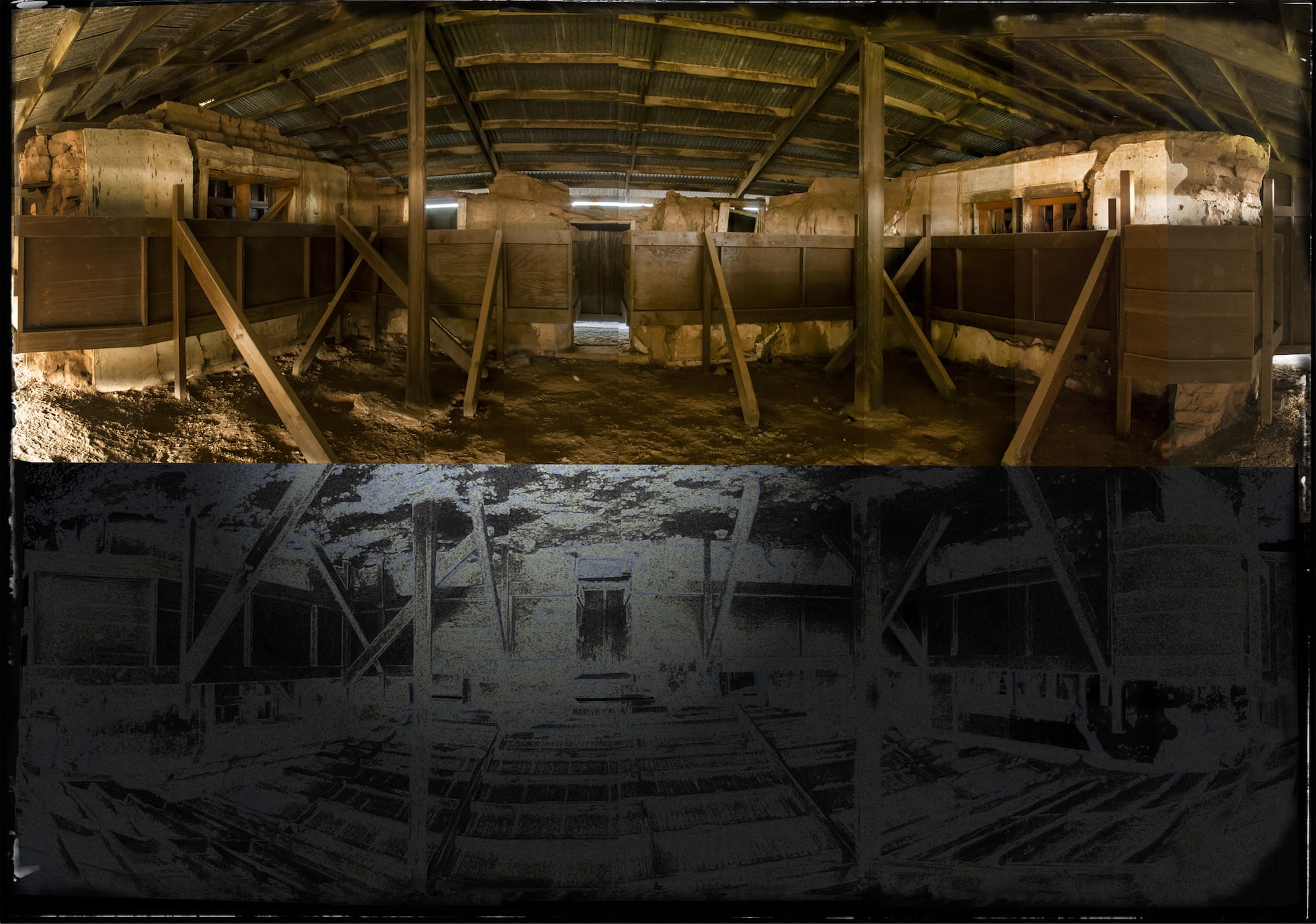
The crumbling Trujillo Adobe (built 1862) is beyond repair. In atrophy, however, the residence is a formidable instrument operating both from reverence and in tactical acuity: Heightened under the shiver of immediacy, a race to delay inevitable collapse works to re-establish a settlement by Latinos as the foundational heritage in Riverside, California (as opposed to a fantasy heritage of Anglo settlements promoted as “firsts” in the area), and on the other hand, acts as a foil–an inert, sitting-duck at the crosshairs of a technologically mechanistic real-estate development pattern in the region–warehousing.
Cal Poly University’s Geophysicists wander the grounds, refractometrically mapping 5-square miles of deposited silt below the original settlement between the Adobe and the Agua Mansa cemetery. Dimensionless X-ray light penetrates eight feet down to remnants of a catastrophic Santa Ana River flood in 1870, anticipating the discovery of a plow, jewelry, and corpses.
Walter Benjamin wrote that a translation is a mode through which expression is understood. We ask how the geophysical map with our architectural intervention might mode-ulate the “historical” structure towards enhanced operability in the realms of citizens’ rights to heritage and the forces of influence?
The Trujillo Adobe recovery project is an ongoing collaborative effort with The Spanish Trail Heritage Foundation, California State Polytechnic University Pomona, and Wendy Gilmartin Architecture.
Wendy Gilmartin
Wendy is the founding principal of Wendy Gilmartin Architecture, holds an MArch degree from Rice University, and is an educator and writer in Los Angeles. wendygilmartin.com | @w_gilmartinez